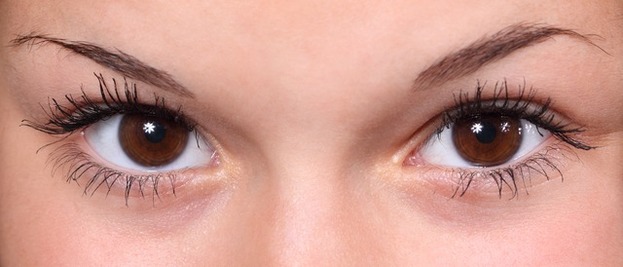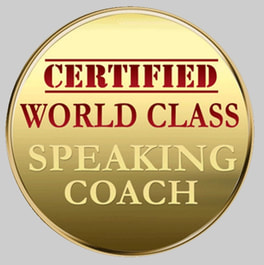
How well do you look?
As in… how well do you look at the people you communicate with?
Do you look at all?
If you step into an elevator with a stranger, your eye contact will be fleeting at best. If you are enjoying an intimate moment with the love of your life, your eye contact will be deep, protracted and intense. Real life tends to be somewhere in between these two extremes. For the public speaker, eye contact is definitely important (or rather, the “essence” of eye contact – I will explain this distinction later).
Why is eye contact so important anyway?
Recently, a large county hospital in the U.S. analysed their letters of complaint from patients and found that 90% of letters cited poor doctor-patient “eye contact”. On further examination, patient’s interpreted this as a “lack of caring” by the doctors. <source>
You may already be aware that eye contact conveys confidence, but it also shows that you care!
Let me ask you… do you care about your audience?
Ah, of course you do. Otherwise you wouldn’t be reading this article.
Perhaps you find eye contact intimidating. Perhaps other people find your eye contact too intense. Maybe you are comfortable with eye contact in small groups and informal settings, but you’re not sure how to use your eyes in front of a larger audience. Or maybe you have a passing interest in the topic and would like to pick up a few tips…
First off, while it is important to make eye contact, you don’t actually have to make actual eye contact. What do I mean? Well, it’s all in the intention. If you find direct eye to eye connection too intense you can always look at your recipient’s nose. It also eases the intensity if you look directly at one eye (either the left or right). You can also look between the eyes, at the mid forehead. Your recipient will find any of these options just as engaging. In some cases these techniques can be more relaxed and friendly. Practice them at home, looking in the mirror, to see the effects.
If you’ve ever received feedback that your eye contact is too intense, it’s likely that person has issues with people who make good eye contact, so you have nothing to worry about. Take it as a compliment. If, on the other hand, many people remarked on your eye intensity that indicates an issue. You can use the nose and mid-forehead techniques above to remove your intensity.
It may also be that you are trying too hard to look at people. People who stare with excessive intensity tend to have too much awareness “in their heads” – they are overthinking; trying to make a connection rather than allowing it. If you have this tendency and want to overcome it, consciously try to reduce the time you spend locking eyes with people. Break up eye contact by spreading it around the audience and occasionally “looking within” (i.e. looking to the side, as if to reflect).
For those of you with especially intense eye contact, become more grounded in your body by breathing from behind your belly. The more connected you are with your body, the less intense your eye contact will be. All of this takes practice but it doesn’t take long to get the hang of.
What about connecting with large audiences?
While it is important to make eye contact with most if not all of you audience there are a couple of insights that make this task less challenging.
First off, you only need to make eye contact with an individual from your audience once or twice during your entire speech. Make the eye contact genuine and meaningful, with the simple intention of truly expressing what you are saying to that particular person. Speak from the heart.
Secondly, for anyone in your audience situated more than 5-10 metres away (and not isolated from others around them) you only need to make eye contact with one person in their area. Everyone around them will think you have looked at them. The size of the group you can cover with one glance increases as the distance increases. Think of it like splashing paint on your audience with your eyes. The further away your audience is, the bigger your footprint of paint. As long as you’ve covered everyone once by the end of your speech your job is done.
Break your audience up into different areas; perhaps four corners, and the edges and centre in between. Make sure not to focus on one area for too long. Spread your love around, so to speak.
The front two or three rows of your audience can enjoy more individual eye contact. That’s their reward for sitting so close to you. Again, you only need to glance at them once or twice. Just make it count. Sincerity, conviction and warmth never fail to succeed.
I will close by stressing that while eye contact is important, the “essence” of eye contact is even more important. That’s why looking at someone’s nose has the same effect as looking into their eyes. It’s all in the intention. If you don’t believe me watch the TED speech entitled “Looking Past Limits” by Caroline Casey. If you haven't seen it before there's a little surprise revealed a few minutes into her speech. Seriously, how good is her connection with her audience?
Link to Caroline's speech: https://www.youtube.com/watch?v=YyBk55G7Keo
As in… how well do you look at the people you communicate with?
Do you look at all?
If you step into an elevator with a stranger, your eye contact will be fleeting at best. If you are enjoying an intimate moment with the love of your life, your eye contact will be deep, protracted and intense. Real life tends to be somewhere in between these two extremes. For the public speaker, eye contact is definitely important (or rather, the “essence” of eye contact – I will explain this distinction later).
Why is eye contact so important anyway?
Recently, a large county hospital in the U.S. analysed their letters of complaint from patients and found that 90% of letters cited poor doctor-patient “eye contact”. On further examination, patient’s interpreted this as a “lack of caring” by the doctors. <source>
You may already be aware that eye contact conveys confidence, but it also shows that you care!
Let me ask you… do you care about your audience?
Ah, of course you do. Otherwise you wouldn’t be reading this article.
Perhaps you find eye contact intimidating. Perhaps other people find your eye contact too intense. Maybe you are comfortable with eye contact in small groups and informal settings, but you’re not sure how to use your eyes in front of a larger audience. Or maybe you have a passing interest in the topic and would like to pick up a few tips…
First off, while it is important to make eye contact, you don’t actually have to make actual eye contact. What do I mean? Well, it’s all in the intention. If you find direct eye to eye connection too intense you can always look at your recipient’s nose. It also eases the intensity if you look directly at one eye (either the left or right). You can also look between the eyes, at the mid forehead. Your recipient will find any of these options just as engaging. In some cases these techniques can be more relaxed and friendly. Practice them at home, looking in the mirror, to see the effects.
If you’ve ever received feedback that your eye contact is too intense, it’s likely that person has issues with people who make good eye contact, so you have nothing to worry about. Take it as a compliment. If, on the other hand, many people remarked on your eye intensity that indicates an issue. You can use the nose and mid-forehead techniques above to remove your intensity.
It may also be that you are trying too hard to look at people. People who stare with excessive intensity tend to have too much awareness “in their heads” – they are overthinking; trying to make a connection rather than allowing it. If you have this tendency and want to overcome it, consciously try to reduce the time you spend locking eyes with people. Break up eye contact by spreading it around the audience and occasionally “looking within” (i.e. looking to the side, as if to reflect).
For those of you with especially intense eye contact, become more grounded in your body by breathing from behind your belly. The more connected you are with your body, the less intense your eye contact will be. All of this takes practice but it doesn’t take long to get the hang of.
What about connecting with large audiences?
While it is important to make eye contact with most if not all of you audience there are a couple of insights that make this task less challenging.
First off, you only need to make eye contact with an individual from your audience once or twice during your entire speech. Make the eye contact genuine and meaningful, with the simple intention of truly expressing what you are saying to that particular person. Speak from the heart.
Secondly, for anyone in your audience situated more than 5-10 metres away (and not isolated from others around them) you only need to make eye contact with one person in their area. Everyone around them will think you have looked at them. The size of the group you can cover with one glance increases as the distance increases. Think of it like splashing paint on your audience with your eyes. The further away your audience is, the bigger your footprint of paint. As long as you’ve covered everyone once by the end of your speech your job is done.
Break your audience up into different areas; perhaps four corners, and the edges and centre in between. Make sure not to focus on one area for too long. Spread your love around, so to speak.
The front two or three rows of your audience can enjoy more individual eye contact. That’s their reward for sitting so close to you. Again, you only need to glance at them once or twice. Just make it count. Sincerity, conviction and warmth never fail to succeed.
I will close by stressing that while eye contact is important, the “essence” of eye contact is even more important. That’s why looking at someone’s nose has the same effect as looking into their eyes. It’s all in the intention. If you don’t believe me watch the TED speech entitled “Looking Past Limits” by Caroline Casey. If you haven't seen it before there's a little surprise revealed a few minutes into her speech. Seriously, how good is her connection with her audience?
Link to Caroline's speech: https://www.youtube.com/watch?v=YyBk55G7Keo


 RSS Feed
RSS Feed
